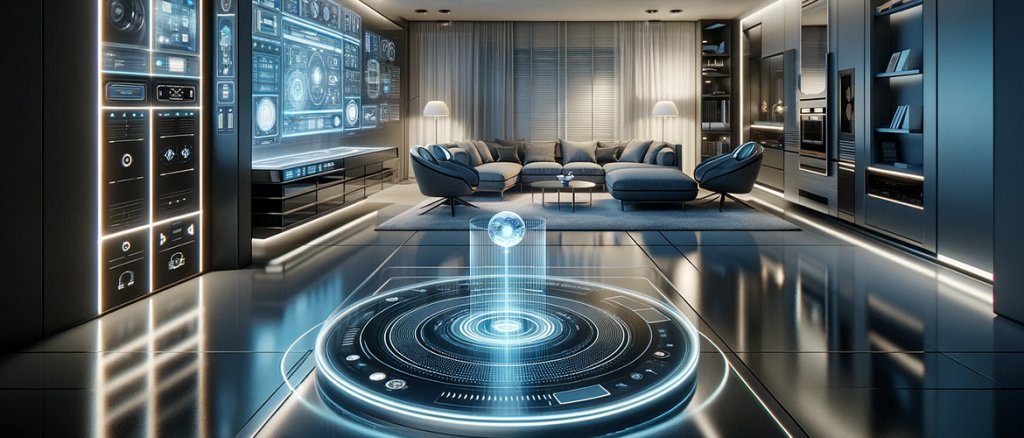Smart home automation has revolutionized modern living by integrating technology to enhance convenience, security, and efficiency. With the rise of AI, IoT, and voice assistants, homeowners can now control their devices remotely, automate tasks, and create a more intelligent living environment. This article explores the benefits of smart home automation, its impact on daily life, and future trends in home technology.
1. Understanding Smart Home Automation

Smart home automation involves using internet-connected devices that communicate with each other to perform automated functions. These systems can be controlled via smartphones, voice commands, or AI-driven automation.
Key Components of Smart Home Automation
- Smart Lighting: Automated control of brightness, color, and schedules.
- Smart Thermostats: AI-powered temperature control for energy savings.
- Security Systems: Smart locks, cameras, and motion sensors for enhanced safety.
- Smart Appliances: AI-driven kitchen gadgets and home devices for better efficiency.
- Voice Assistants: AI assistants like Alexa, Google Assistant, and Siri for hands-free operation.
2. Benefits of Smart Home Automation
A. Convenience and Comfort
- Remote access to devices via smartphones or voice assistants.
- Automated scheduling for lighting, temperature, and appliances.
- Personalized settings that adapt to user preferences.
B. Enhanced Home Security
- Real-time surveillance with smart cameras and motion detectors.
- Smart locks with remote access and security alerts.
- AI-driven monitoring to detect suspicious activity.
C. Energy Efficiency and Cost Savings
- Smart thermostats optimize heating and cooling, reducing energy bills.
- Automated lighting ensures lights are used only when necessary.
- Smart appliances improve energy efficiency and consumption.
D. Health and Wellness Benefits
- Air quality sensors improve indoor air conditions.
- Smart sleep trackers enhance sleep quality.
- Automated reminders for hydration and medication support healthy living.
E. Remote Monitoring and Control
- Monitor security, energy use, and appliances from anywhere.
- Get real-time notifications and status updates.
- AI-based predictive maintenance alerts for appliances.
3. Challenges of Smart Home Automation

A. High Initial Costs
- Smart devices and installations can be expensive.
- Older homes may need upgrades for full automation.
B. Data Privacy and Cybersecurity Risks
- IoT devices collect personal data, raising privacy concerns.
- Cybersecurity threats can compromise smart home systems.
C. Compatibility Issues
- Some devices may not integrate seamlessly with each other.
- Lack of universal standards for all smart home technologies.
D. Dependence on Internet Connectivity
- Most smart home features require a stable internet connection.
- Internet outages can disrupt automation and control.
4. The Future of Smart Home Automation

A. AI and Machine Learning Advancements
- Smarter AI-powered assistants for more personalized automation.
- Machine learning algorithms that adapt to user behavior.
B. 5G and IoT Expansion
- Faster, more reliable internet connectivity for seamless automation.
- Increased integration of IoT devices for smarter living.
C. Sustainable and Green Smart Homes
- Solar-powered smart homes for energy efficiency.
- Smart water management systems to reduce water waste.
D. Gesture and Voice Control Enhancements
- Advanced voice recognition for more intuitive interactions.
- Touchless automation features for convenience and hygiene.
Also Read : How Home Automation Technology Is Transforming Modern Living
Conclusion
Smart home automation offers numerous benefits, including convenience, enhanced security, and energy efficiency. As technology continues to evolve, AI, IoT, and 5G will further improve smart home capabilities, making modern living more comfortable, safer, and sustainable. While challenges like high costs and cybersecurity risks exist, the future of home automation promises even greater innovations.
FAQs
1. What is smart home automation?
Smart home automation refers to the integration of internet-connected devices to automate and control home functions remotely or through AI-driven systems.
2. How does smart home automation improve security?
Smart security systems include cameras, motion sensors, and smart locks that provide real-time monitoring and remote access for enhanced security.
3. Can smart home automation save energy?
Yes, smart thermostats, lighting, and energy-efficient appliances help reduce electricity consumption and lower utility bills.
4. What are the biggest challenges of smart home automation?
High installation costs, data privacy risks, compatibility issues, and reliance on internet connectivity are some challenges.
5. What is the future of smart home technology?
The future includes AI-driven automation, 5G connectivity, sustainable smart homes, and improved voice and gesture control technologies.

